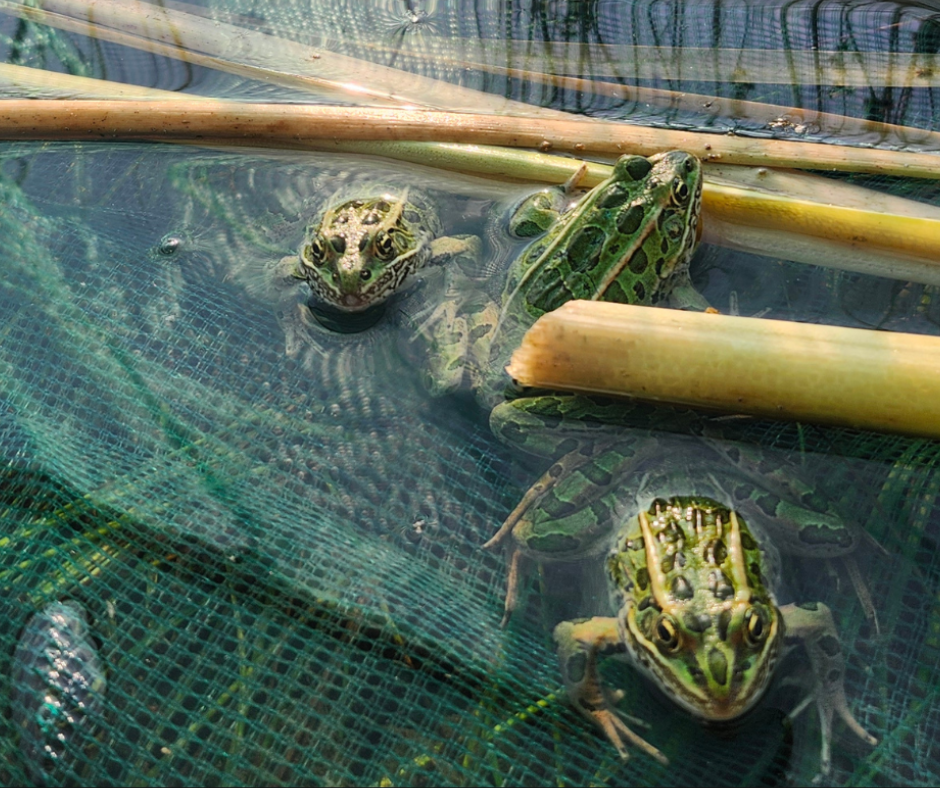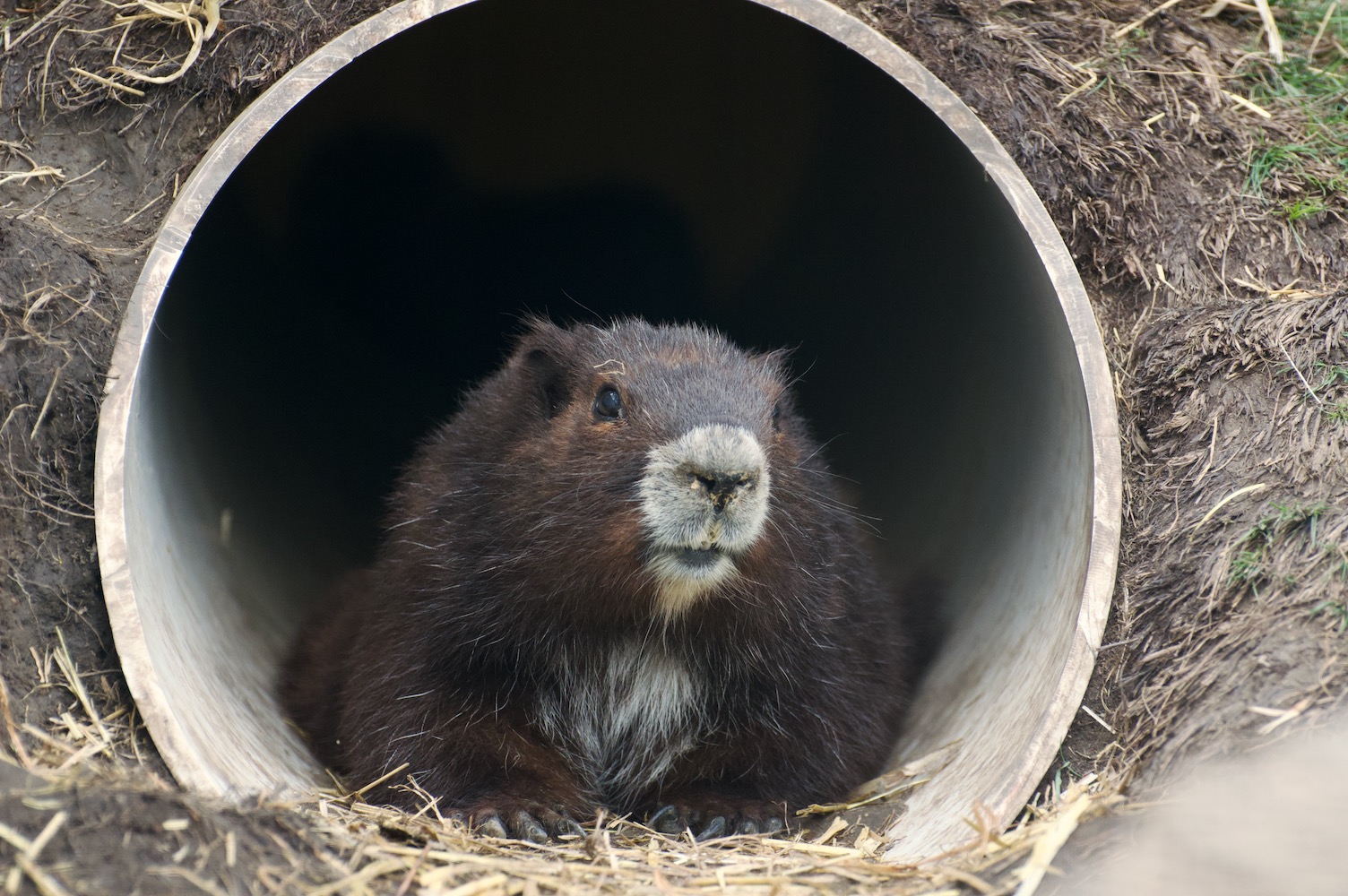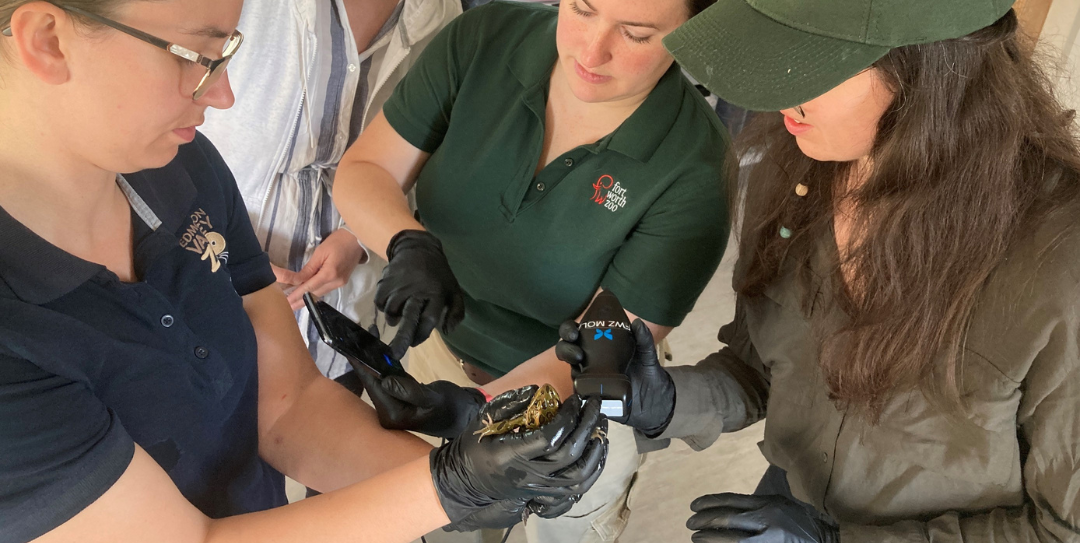Lithobates pipiens
Northern Leopard Frog
Northern leopard frogs play an important role transferring nutrients between terrestrial and aquatic ecosystems. They are an indicator species that reflect the health of the wetland ecosystems where they live.
The situation
What is threatening the northern leopard frog?
Northern leopard frogs inhabit wetlands across North America. Although common across much of their eastern range, the Rocky Mountain population of northern leopard frog is endangered under the federal Species at Risk Act. The decline of this sensitive population is likely a result of habitat loss and degradation, invasive species, and disease.
Leaping towards recovery
The goal of this conservation program is to protect against the extinction of the Rocky Mountain population of northern leopard frogs through the establishment of a captive assurance and breeding population at the Wilder Institute and reintroducing the species into areas within their historic range in British Columbia where they are no longer found.
Our work
Every spring, our research team and partners head out into the field to collect tadpoles for head-starting and to supplement the captive population at the Wilder Institute. Captive-bred offspring and head-started tadpoles and frogs are reintroduced to suitable locations in British Columbia, as determined by the British Columbia Northern Leopard Frog Implementation Recovery Team. Reintroduction sites are often supplemented with wild-to-wild translocations as well.
To track the survival and breeding status of the reintroduced individuals, the Wilder Institute conducts annual monitoring at release sites which includes breeding call surveys using autonomous recording units and visual encounter surveys.
As part of a wider goal of improving amphibian conservation in North America, our staff are also members of the Oregon Spotted Frog and Northern Leopard Frog Captive Husbandry Group, the British Columbia Northern Leopard Frog Recovery Implementation Team, the Committee on the Status of Endangered Wildlife in Canada (COSEWIC) Amphibians & Reptiles subcommittee, and the International Union for Conservation of Nature (IUCN) Species Survival Commission Amphibian Specialist Group.
Conservation breeding
The goal of the conservation breeding program is to increase the number of northern leopard frogs that can be reintroduced back into the wild. The Wilder Institute launched the program in 2017 and our new facility was designed to provide a high standard of care for captive frogs. We have tried to replicate conditions in the wild to encourage natural behaviours such as breeding and foraging.
Our conservation impact
To help with recovery efforts for the northern leopard frog, the Wilder Institute established a captive assurance population and conservation breeding program for this species. Research on genetics, reproduction, population ecology, habitat, and ways to improve survey techniques for this species continues.
Did you know?
Most northern Leopard frogs, like the leopard, have irregular shaped dark spots over their back and legs likely to help them blend into their surroundings.
The tadpoles of northern leopard frogs have eyes on the top of their head instead of on the side like many other frog species.
Teamwork
We would like to thank the following partners and collaborators for working with us in helping conserve the Rocky Mountain northern leopard frog population.



